Does Easter in Madrid sound like a good idea? It is! Easter is one of the best times to visit the city. But you may need a little help choosing the best celebrations. As a Madrid local, I have listed everything you need to know about Easter in Madrid, so the only thing you have to do is relax and enjoy.
Pro Tip: Planning your trip to Madrid over Easter? Bookmark this post in your browser so you can easily find it when you’re in the city. Check out our Madrid Guide for more planning resources, our best Madrid tours for a memorable trip, and the top things to do in Madrid.
How To Celebrate Easter In Madrid: Best Things To See And Do
Easter is a great time to visit Madrid. While you may have heard more about Seville’s Easter celebrations, Madrid also has plenty of events during the Holy Week (Semana Santa). Most residents leave the city for a few days off over the Easter weekend. Traffic and queues drop dramatically, making the city easier to explore.
The Semana Santa begins on Palm Sunday and ends on Easter Sunday. In Madrid, only Maundy Thursday and Good Friday are bank holidays. The Holy Week’s calendar includes religious celebrations, concerts, and other fun things to do.
Of course, there are also plenty of special Easter treats to eat! In this guide, we share our top tips for spending Easter in Madrid, plus a list of the top things to do to get a real taste of traditional easter celebrations in the Spanish capital.
Not ready to book a tour yet? Check out our Madrid Guide.
Admire The Pasos At The Holy Week Processions
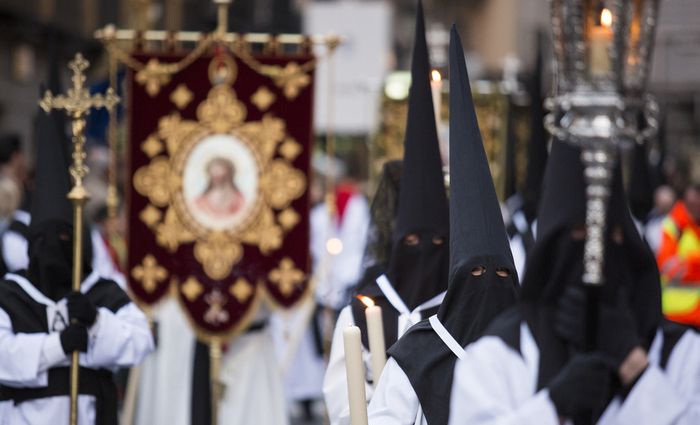

Whether you’re religious or not, to experience the spectacular fervor of the Semana Santa you must see a procession. There is at least one procession a day throughout the week, organized by different brotherhoods and confraternities.
The members dress in traditional robes and hoods to parade the pasos (decorated floats with statues of Jesus Christ and the Virgin Mary) on the city’s streets. Pasos are usually accompanied by rolling drums or traditional singing, the saetas, creating a unique atmosphere. Also, some of the statues have great artistic and historical value, as they date back to the 17th and 18th centuries.
Top Easter processions in Madrid:
- La Borriquita (Palm Sunday): It is one of the biggest Easter processions in Madrid. It starts from the Almudena Cathedral, beside the Royal Palace, and it crosses the city center to end in the Malasaña quarter.
- Cristo De Los Estudiantes (Palm Sunday): The beautiful cross is a creation of Luis Salvador Carmona, one of the most renowned sculptors of the 18th century.
- Jesús El Pobre (Holy Thursday): The statue of Jesus Christ dates back to the 18th-19th century, and its author remains unknown.
- Cristo De Medinaceli (Good Friday): The Medinaceli Christ has the reputation of being miraculous. The statue came from Mehdya (Morocco), under Spanish occupation during the 17th century. Years later, the sultan gained back the city and kept the Medinaceli Christ as a spoil of war. Finally, the monks retrieved it to send back to Spain. It arrived in Madrid in 1682.
Be Moved by The Traditional Singing Of The Saetas
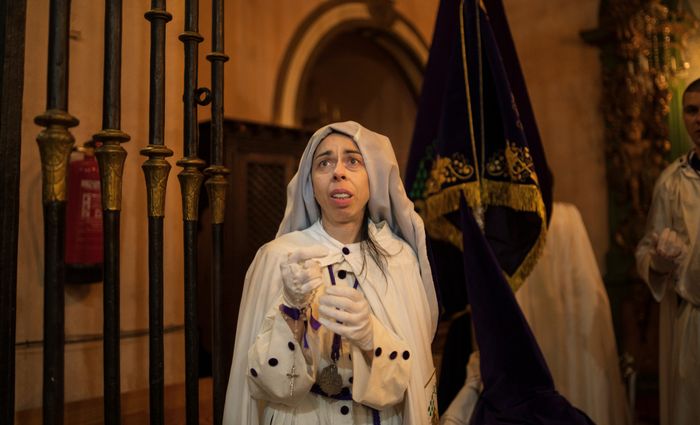

The saeta is an emotional religious song influenced by flamenco that accompanies the Pasos. They are popular in Andalusia and considered the legacy of the Franciscan chant, the muezzin’s Adhan, and the Jewish psalmody.
You can enjoy them during Madrid’s processions. But don’t worry if you don’t get there in time. Many other musical events celebrate saetas during these days, like the concerts organized by the Casa Museo Lope de Vega.
Location: Casa Museo Lope de Vega
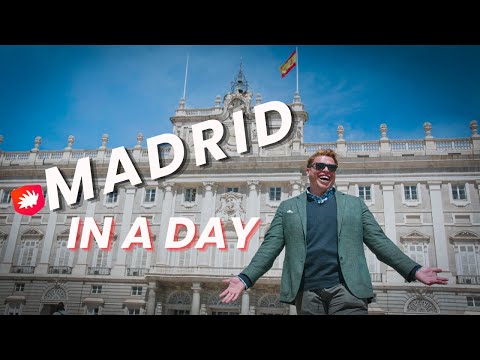
Watch this video on YouTube
Not ready to book a tour yet? Check out our Madrid Guide.
Feel the Beat of the Drum Parade in Plaza Mayor
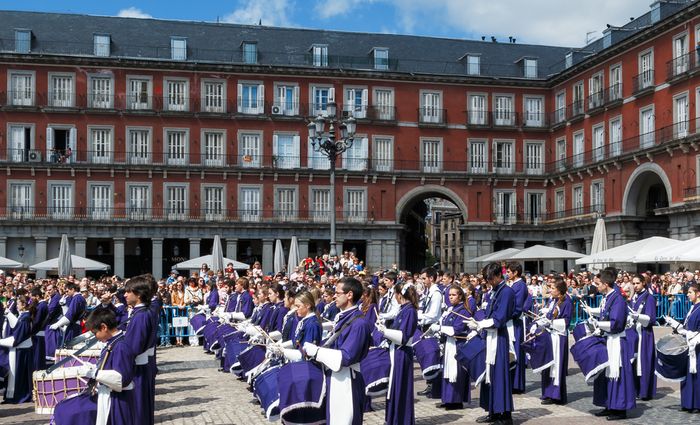

The drum parade is another highly anticipated event. Over 100 drummers parade from the nearby square Plaza Conde de Miranda to the Plaza Mayor for this one-hour event that closes the Holy Week. This ancient tradition is also part of UNESCO’s Intangible Cultural Heritage of Humanity.
Pro Tip: Do you want a privileged view of the processions or the drummer’s parade? Check the itinerary and book a hotel with a balcony over the event. Here is our list of the best hotels in Madrid.
Eat the Traditional Treats of Semana Santa
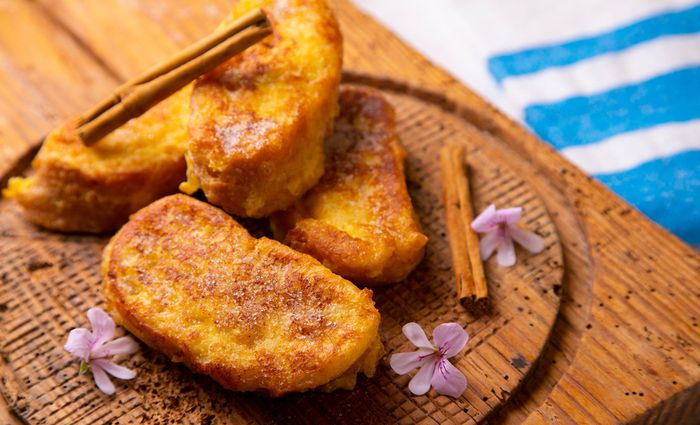

It is not the Holy Week without tasting Madrid’s traditional comida. A must-have pleasure is the torrijas. It consists of slices of bread soaked in milk (sometimes wine), dipped in egg, deep-fried, and topped with sugar and cinnamon. The fantastic thing about torrijas is the texture, which is crispy on the outside but soft on the inside.
If you have a sweet tooth, also try the florones and the buñuelos de viento. The former are deep-fried pastries shaped like a flower. The latter are fried dough cakes filled with cream or chocolate.
For a savory aperitif, try the Soldaditos de Pavía or Pavías. They are small pieces of deep-fried cod served with sliced red pepper. Tradition says that the colors inspired the dish’s name, as they remind of the soldiers’ uniforms during the battle of Pavía.
Cod is the main ingredient in many Easter recipes, so you can also rely on the delicious croquetas. A long walk in Retiro Park or the Casa de Campo is what you need after all these fritters.
Catch an Easter Music Concert at San Ginés Church
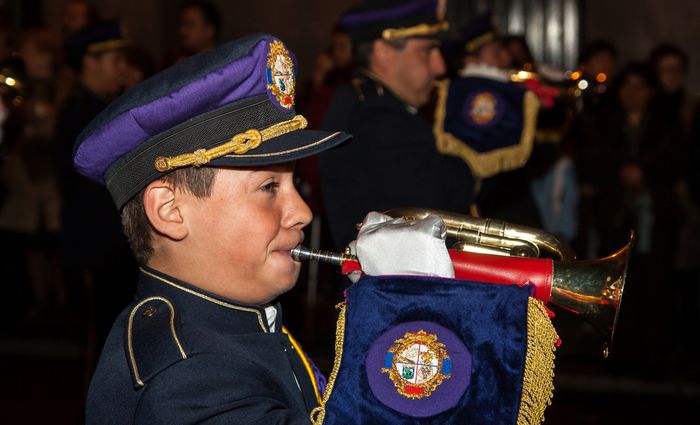

The Easter concert program in Madrid is pretty rich. Bach, Mozart, and all the great pieces of religious music fill the air of churches and theaters. Of all the events, the organ concerts in the San Ginés Church are unique.
From Maundy Thursday to Easter Sunday, the San Ginés Church hosts liturgical music concerts with vocal ensembles to celebrate each of these days of the Holy Week. Check out the church’s official calendar of events for concert information.
After the show, try the hot chocolate with churros in the nearby Chocolateria San Ginés. It’s so popular that it’s almost impossible to get a spot during busy seasons like Christmas. Easter is a great opportunity because you can avoid long waiting lines.
Location: San Ginés Church | Chocolateria San Ginés
Watch a Traditional Passion Play in Chinchón
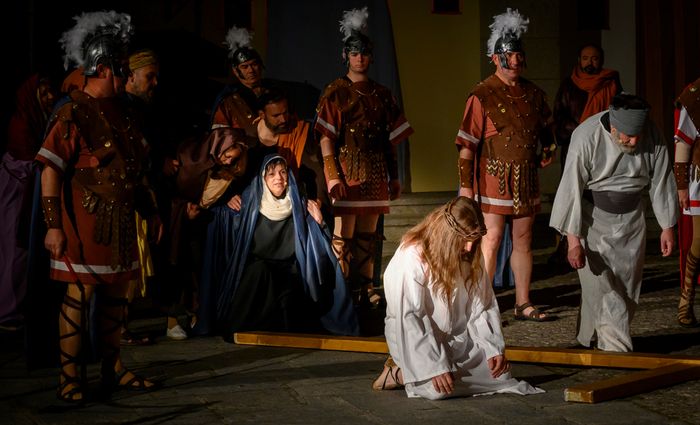

There are at least 10 locations near Madrid that organize Easter festivals that would make for a great day trip. Among them, I suggest two locations: Chinchón and Alcalá de Henares.
Chinchón is a lovely little village that hosts a long-held tradition of the play of the Passion of Christ on Holy Saturday. It’s a great way to see a bit beyond the city of Madrid and join in traditional Easter celebrations. See the website for up-to-date information about the Passion in Chinchón.
Alcalá de Henares has tremendous historical and architectural value, so it’s a great day trip all year round. Over Easter, the town hosts a traditional festival featuring multiple processions in celebration of Semana Santa.
Location: Chinchón | Alcalá de Henares
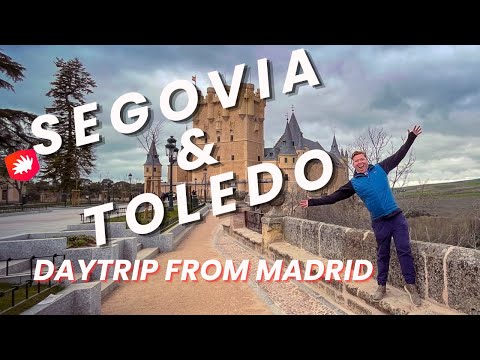
Watch this video on YouTube
Not ready to book a tour yet? See our Madrid Guide for more info.
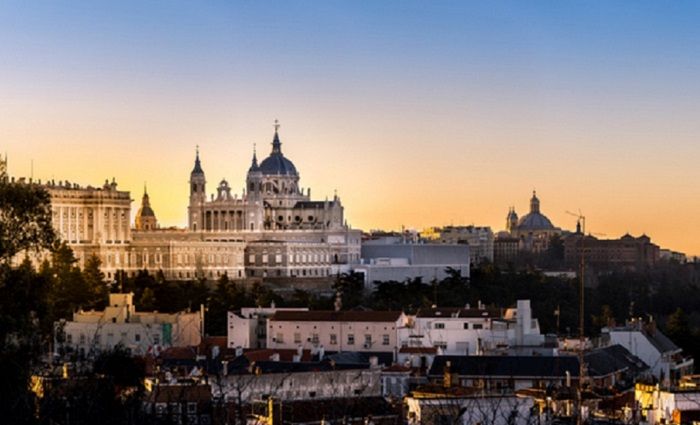

Where To Stay in Madrid
Madrid is a vast city with many areas to stay in, including beyond the downtown area. Choose a hotel near the top things you want to see in this beautiful old city.

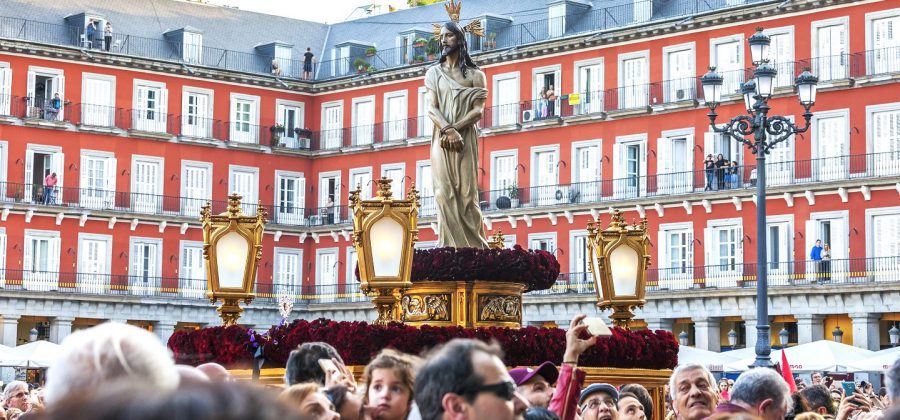
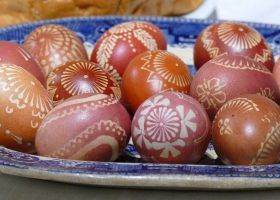

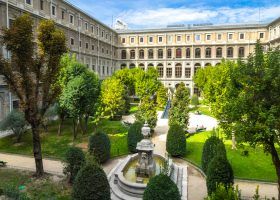
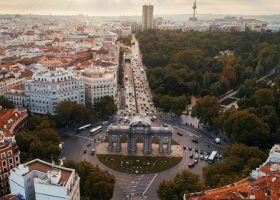
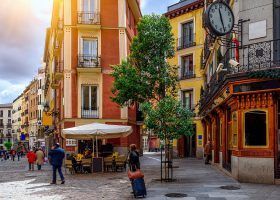
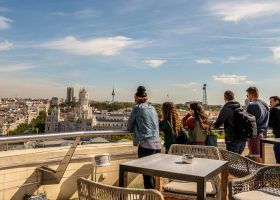


Leave a Comment